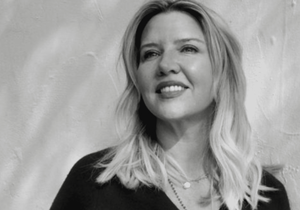Desire is the Opposite of Should: Reclaiming the Joy of Doing

“Desire” and “Should” can’t coexist. “Should” comes from an external place. For example: I should call my mother; I should exercise; I should be more sexy. “Desire” comes from an internal place: I want to call my mom because I want to stay connected to her; I want to exercise because I feel great after running or dancing hard; I love seeing the joy on my partner’s face when we are intimate.
In the face of “should” we are recalcitrant, heel-dragging, and resentful. But when something arises from desire, it is no longer an obligation, and it’s much easier to act. So here’s the challenge: When something matters to us, but it’s in the “should” category, can we switch gears and connect it to desire?
Turning Should into Desire
Here’s a three-step turnaround using a common “should”— e.g., “I should drink more water.”
1) Strip away the should- there’s nothing you have to do: “I don’t have to drink more water if I don't want to. I get to choose.” Give yourself permission to not do what you think you “should” do. Acknowledge that you always have a choice. This gives you a blank slate to work from, a neutral platform from which you might attempt to reconnect with the joy that underlies an activity, and rediscover the glow of desire behind it.
2) Name the good: “When I drink more water my skin looks better, and my digestion is easier.” This next step is objective, factual, and helpful. It can help you become clear about the situation and gather important information— but it’s not very inspiring. This information helps us build a bridge to desire.
3) Make it personal, sensorial, evocative: “I want to drink water because of the cool sensation I have as it goes down my throat, and the springy, clear quality it gives my skin.” When we give the factual information a sensory overlay—by imagining how the action actually feels, and holding a clear image in our mind—anticipation arises. We actively create the experience of desire. (I just poured myself a long tall glass of water. Did you?)
Reconnecting to What We Really Want
Sometimes, we can be so shrouded in “should” that we don’t even feel our own desires anymore. This is especially true if we were raised with value placed on pleasing other people, and/or of being a good boy or girl. It can be hard to shake the importance of duty, or the merits of formal rule structures or etiquettes. If we have lived a lifetime playing by other people’s rules, it can be difficult to even know what we want. To practice getting in touch with what you want in small ways, try simple exercises, like these:
- In a restaurant, try NOT looking at the menu first. Before taking in what’s on offer, ask yourself: “What does my body want to eat?”
- On a day off work, ignore your planned agenda. As you wake up, ask yourself: “What do I feel like doing today?” Give yourself complete freedom to answer this question genuinely. (When you are already obligated to others for the day, it may be hard or impossible to shift your plans in real time—but you can begin to get more in touch with what you truly want, which allows space for more of that to enter your life. In other words, you can know it before you actually do it.)
- In sexuality, reconnecting with our desire is aided by asking what we want to give and receive. What do I want to give? What do I want to receive?
The Deep Desire Inquiry
Here is another simple exercise you can try, either with someone else (it works great with a stranger!) or with a journal. For 15 minutes, have the other person ask you “What do you want?,” over and over again. They ask it every time you pause, and keep asking when you seemingly can’t think of another thing. It is amazing to observe what happens as people are repeatedly asked this question! (Alone with a journal, simply write down the answer to the question repeatedly and spontaneously for 15 minutes, without taking a break.)
For the first few minutes, peoples tend to answer with: I want a nap. I want a beer. I want some chocolate. I want a particular pair of shoes. But when pressed, the responses quickly go deeper: I want to make art and not do accounting. I don’t want to be such a pleaser. I want to move to the beach. I want to downsize my housing. I long for richer sensuality with my partner. I want to rest. Getting in touch with such desires can result in minor changes, or even in big life upheavals, depending on when we last asked ourselves these questions.
To ignite arousal in all areas of life, practice getting back in touch with your own desire. There are no shoulds, there are no musts, there are no mandates. When we act from genuine true desire, our joy (and the joy we bring others!) will expand and grow.
|
|
|






















